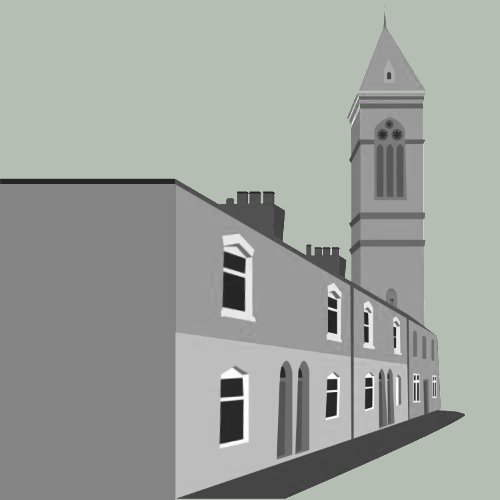
Jericho
A brief note on Jericho's heritage . . .
By Heathcote Williams
Jericho derives its name from the public house-cum-farm called Jericho House, first noted in 1668. It has tremendous historical significance as, for instance, Oxford's earliest industrial base and as the location for some significant episodes in the lives of the Pre-Raphaelites, the only British art movement to have international significance. It was in Jericho that Burne-Jones and William Morris first clapped eyes on Rosetti's paintings in Printers' House in Great Clarendon Street, causing them to decide to abandon their theological studies in Oxford and become painters.
Jericho has also been home to a number of Oxford thinkers, such as Isaiah Berlin, and St Sepulchre’s Cemetery houses their remains – notably those of Benjamin Jowett ("I am the Master of Balliol College, and what I don't know is not knowledge") and Thomas Combe, the Pre-Raphaelites' first patron and provider of Oxford India paper upon which the Oxford Englsih Dictionary was printed. Jericho's landmark, St Barnabas' Church, with its magnificent Romanesque tower, is featured in Thomas Hardy's Jude the Obscure, and the suburb has inspired Colin Dexter and Philip Pullman, on whom, of course, Jericho's boaters have had a powerful influence in the creation of Pullman's "Gyptians".
The Church is the subject of an idyllic poem by John Betjeman, celebrating its magical architecture, and Betjeman himself was also instrumental in both preventing the canal in Jericho from being filled in and stopping a road from being driven through Jericho in the 1960s (linking it to a now-abandoned road-building scheme part of which was planned to run across Christ Church Meadow). Betjeman's daughter recently wrote a piece in 'The Oldie' extolling "unassuming small-scale Jericho"; its unique history and its distinctive canal-side atmosphere with its "myriad streets of modest two-up and two-down cottages". Speaking of the church of St Barnabas she wrote: "It must be one of the most powerful Victorian interiors in the land."
Lewis Carroll took delivery of the first edition of 'Alice in Wonderland' here, and the canal was regularly used by T. E. Lawrence whose childhood was spent in nearby Polstead Road. Jericho continues to offer the same access to the canal which, once upon a time, all of the above enjoyed.
Heathcote Williams (circa 2006, updated by Mark Davies, 2022)
The association from the same century with one of Oxford’s oldest extant public houses, the Bear Inn, which was run by the Furse family who also owned Little and Bear Meadows, the fields on which all of western Jericho was constructed.
Jericho’s cultural connections: R. D. Blackmore, Lewis Carroll, Thomas Hardy, the Pre-Raphaelites, John Betjeman, A. E. Coppard, John Wain, , P. D. James, Joanna Trollope, Colin Dexter, Phillip Pullman – to name but a few.
Jericho’s cosmopolitan diversity, accommodating, for instance, probably the first Lebanese restaurant in Oxford, a Jewish synagogue, a Baptist Chapel, and an independent cinema, while restaurants from around the world line Walton Street to the east. Historically it accommodated a large number of public houses and alehouses, and a wide variety of small artisan industries
